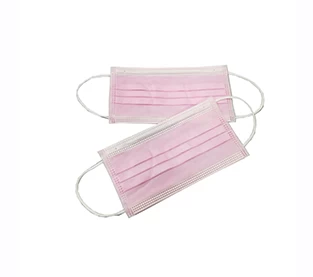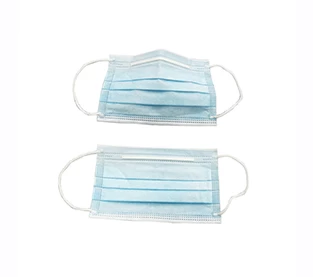Product: ES Material Fiber Nonwoven Fabric For Packaging
Raw Material: PP+PE
Nonwoven Technology: thermal bonded
Dotted Design: dot or plain
Gram: 25 gsm - 30 gsm
Color: White
Specification: custom
Sample: Can be provided without charge, freight to be collect
Applications:
Medical(20-60gsm): face masks,diapers,bed sheets,curtains,pillow covers,sanitary,etc
Packaging(25-30gsm): tea bag, coffee bag/filter paper, dust-proof covers.etc
Product: ES Thermal Bonded Non Woven Fabric For Tea Bag
Raw Material: PP+PE
Nonwoven Technology: thermal bonded
Dotted Design: dot or plain
Gram: 25 gsm - 30 gsm
Color: White
Specification: custom
Sample: Can be provided without charge, freight to be collect
Applications:
Medical(20-60gsm): face masks,diapers,bed sheets,curtains,pillow covers,sanitary,etc
Packaging(25-30gsm): tea bag, coffee bag/filter paper, dust-proof covers.etc
Product: Composite Non Woven Paper Desiccant Packaging Material
MOQ: 1000 kg
Material: Composite Non Woven Paper
Specification: Custom sizes.
Design: Welcome custom logo and design. Welcome OEM.
Color: Full Color of CMYK,Pantone Color as customer requirements
Weight: Based on size & material,thickness
Delivery Time: 10-15 days after confirmed the final artwork and order
Product: Desiccant Wrapping Paper
MOQ: 1000 kg
Material: DuPont Material
Specification: Custom sizes.
Design: Welcome custom logo and design. Welcome OEM.
Color: Full Color of CMYK,Pantone Color as customer requirements
Weight: Based on size & material,thickness
Delivery Time: 10-15 days after confirmed the final artwork and order
Product: Bi-component Non Woven Fabric Desiccant Packaging Material
MOQ: 1000 kg
Material: Bi-component Non Woven Fabric
Specification: Custom sizes.
Design: Welcome custom logo and design. Welcome OEM.
Color: Full Color of CMYK,Pantone Color as customer requirements
Weight: Based on size & material,thickness
Delivery Time: 10-15 days after confirmed the final artwork and order
Product: Spunbond Non Woven Fabric Custom Desiccant Packaging Material
MOQ: 1000 kg
Material: Spunbond Non Woven Fabric
Specification: Custom sizes.
Design: Welcome custom logo and design. Welcome OEM.
Color: Full Color of CMYK,Pantone Color as customer requirements
Weight: Based on size & material,thickness
Delivery Time: 10-15 days after confirmed the final artwork and order
What material is the mask made of?
Why is there such a big difference between different masks? When I wrote the manuscript, I cut open a four-layer activated carbon mask commonly used in laboratories to find out. Its inside looks like this:
We can see that this mask is divided into four layers. The two outermost layers are made of two cloth-like materials, the black one is an activated carbon layer, and there is another denser layer that is a bit like a napkin. After consulting some materials, I learned that, except for the active carbon layer in the middle, the other three layers are made of a material called non-woven fabric(PP Spunbond Nonwoven Fabric Vendor). Non-woven fabric (English name: Non Woven Fabric or Nonwoven cloth), also known as non-woven fabric, is composed of directional or random fibers. It is called cloth because of its appearance and certain properties.
Most of the non-woven fabrics(China Spunbond Polypropylene Fabric Company) on the market are produced by spunbonding. This method extrudes and stretches the polymer to form continuous filaments. After the filaments are laid into a web, the web is bonded by itself. Thermal bonding, chemical bonding or mechanical reinforcement methods make the web into a non-woven fabric. The identification of spunbond non-woven fabrics is relatively easy. Generally, the nip points of spunbonded non-woven fabrics are diamond-shaped.
Another common non-woven fabric(Hydrophobic PP Fabric Factory) manufacturing process is called needle-punched non-woven fabric. Its manufacturing principle is to repeatedly puncture the fiber web by using barbed thorns with triangular cross-section (or other cross-section) edges. When the barbs pass through the web, they force the surface and local inner fibers of the web to penetrate into the interior of the web. Due to the friction between the fibers, the original fluffy web is compressed. When the felting needle exits the fiber web, the pierced fiber bundles break away from the barbs and stay in the fiber web. In this way, many fiber bundles entangle the fiber web so that it can no longer restore the original fluffy state. After many times of needling, a considerable number of fiber bundles are pierced into the fiber web, making the fibers in the fiber web entangled with each other, thereby forming a needle punched non-woven material with a certain strength and thickness.


However, the pores of the above two non-woven fabrics are obviously too large. For medical use, it is obviously impossible to isolate viruses around 100 nm.
Therefore, the middle interlayer of the general surgical mask uses a non-woven fabric manufactured by the melt-blown method. The production of meltblown non-woven fabrics is first to put the polymer masterbatch (usually polypropylene) into the extruder, and melt it in the extruder at a temperature of about 240°C (for PP). The melt passes through the metering pump and reaches the meltblowing die. When the newly formed polymer is extruded from the spinneret, the head end of the compressed air acts on the polymer, and the hot filament is drawn to a diameter of 1~10μm with an airflow higher than the speed of sound (550m/s), according to its physical characteristics This kind of net is called a microfiber net. These ultra-fine fibers with a unique capillary structure increase the number and surface area of fibers per unit area, so that the meltblown cloth has good filterability, shielding, heat insulation and oil absorption. It can be used in air, liquid filter materials, isolation materials, mask materials and other fields.
The filtering mechanism of medical masks is Brownian diffusion, retention, inertial collision, gravity sedimentation and electrostatic adsorption. The first four are all physical factors, which are the natural characteristics of the non-woven fabric produced by the meltblown method. The filterability is about 35%; this is not up to the requirements of medical masks. We need to electret the materials to make the fibers Be charged and use static electricity to capture the aerosol where the new coronavirus is located.
Electrostatic adsorption is the capture of new coronavirus droplets (aerosols) through the Coulomb force of charged fibers. The principle is to make the surface of the filter material more open, the ability to capture particles is stronger, and the charge density increases, the adsorption and polarization effects of particles are stronger, so the meltblown non-woven filter material of the filter layer must be passed through Extreme treatment can achieve 95% filterability without changing the respiratory resistance to effectively prevent viruses.
After some research, the editor roughly understood the composition of the mask in his hand: the outer layer is made of PP needle-punched non-woven fabric, and the middle layer is an activated carbon layer and a PP meltblown fabric layer.